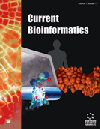- Home
- A-Z Publications
- Current Bioinformatics
- Previous Issues
- Volume 19, Issue 9, 2024
Current Bioinformatics - Volume 19, Issue 9, 2024
Volume 19, Issue 9, 2024
-
-
FMDVSerPred: A Novel Computational Solution for Foot-and-mouth Disease Virus Classification and Serotype Prediction Prevalent in Asia Using VP1 Nucleotide Sequence Data
More LessBackground: Three serotypes of Foot-and-mouth disease (FMD) virus have been circulating in Asia, which are commonly identified by serological assays. Such tests are timeconsuming and also need a bio-containment facility for execution. To the best of our knowledge, no computational solution is available in the literature to predict the FMD virus serotypes. Thus, this necessitates the urgent need for user-friendly tools for Read More
-
-
-
DeepPTM: Protein Post-translational Modification Prediction from Protein Sequences by Combining Deep Protein Language Model with Vision Transformers
More LessAuthors: Necla N. Soylu and Emre SeferIntroduction: More recent self-supervised deep language models, such as Bidirectional Encoder Representations from Transformers (BERT), have performed the best on some language tasks by contextualizing word embeddings for a better dynamic representation. Their proteinspecific versions, such as ProtBERT, generated dynamic protein sequence embeddings, which resulted in better performance for several bioinfo Read More
-
-
-
Integration of Artificial Intelligence, Machine Learning and Deep Learning Techniques in Genomics: Review on Computational Perspectives for NGS Analysis of DNA and RNA Seq Data
More LessAuthors: Chandrashekar K., Vidya Niranjan, Adarsh Vishal and Anagha S. SetlurIn the current state of genomics and biomedical research, the utilization of Artificial Intelligence (AI), Machine Learning (ML) and Deep Learning (DL) have emerged as paradigm shifters. While traditional NGS DNA and RNA sequencing analysis pipelines have been sound in decoding genetic information, the sequencing data's volume and complexity have surged. There is a demand for more efficient and accurate methods of Read More
-
-
-
Prospects of Identifying Alternative Splicing Events from Single-Cell RNA Sequencing Data
More LessAuthors: Jiacheng Wang and Lei YuanBackground: The advent of single-cell RNA sequencing (scRNA-seq) technology has offered unprecedented opportunities to unravel cellular heterogeneity and functions. Yet, despite its success in unraveling gene expression heterogeneity, accurately identifying and interpreting alternative splicing events from scRNA-seq data remains a formidable challenge. With advancing technology and algorithmic innovation Read More
-
-
-
Application of Deep Learning Neural Networks in Computer-Aided Drug Discovery: A Review
More LessComputer-aided drug design has an important role in drug development and design. It has become a thriving area of research in the pharmaceutical industry to accelerate the drug discovery process. Deep learning, a subdivision of artificial intelligence, is widely applied to advance new drug development and design opportunities. This article reviews the recent technology that uses deep learning techniques to ameli Read More
-
-
-
Prediction of Drug Pathway-based Disease Classes using Multiple Properties of Drugs
More LessAuthors: Lei Chen and Linyang LiBackground: Drug repositioning now is an important research area in drug discovery as it can accelerate the procedures of discovering novel effects of existing drugs. However, it is challenging to screen out possible effects for given drugs. Designing computational methods are a quick and cheap way to complete this task. Most existing computational methods infer the relationships between drugs and diseases. The pathway Read More
-
-
-
P4PC: A Portal for Bioinformatics Resources of piRNAs and circRNAs
More LessAuthors: Yajun Liu, Ru Li, Yulian Ding, Xinhong Hei and Fang-Xiang WuBackground: PIWI-interacting RNAs (piRNAs) and circular RNAs (circRNAs) are two kinds of non-coding RNAs (ncRNAs) that play important roles in epigenetic regulation, transcriptional regulation, post-transcriptional regulation of many biological processes. Although there exist various resources, it is still challenging to select such resources for specific research projects on ncRNAs. Methods: In order to facilitate researc Read More
-
-
-
MSSD: An Efficient Method for Constructing Accurate and Stable Phylogenetic Networks by Merging Subtrees of Equal Depth
More LessAuthors: Jiajie Xing, Xu Song, Meiju Yu, Juan Wang and Jing YuBackground: Systematic phylogenetic networks are essential for studying the evolutionary relationships and diversity among species. These networks are particularly important for capturing non-tree-like processes resulting from reticulate evolutionary events. However, existing methods for constructing phylogenetic networks are influenced by the order of inputs. The different orders can lead to inconsistent experimental Read More
-
Volumes & issues
-
Volume 20 (2025)
-
Volume 19 (2024)
-
Volume 18 (2023)
-
Volume 17 (2022)
-
Volume 16 (2021)
-
Volume 15 (2020)
-
Volume 14 (2019)
-
Volume 13 (2018)
-
Volume 12 (2017)
-
Volume 11 (2016)
-
Volume 10 (2015)
-
Volume 9 (2014)
-
Volume 8 (2013)
-
Volume 7 (2012)
-
Volume 6 (2011)
-
Volume 5 (2010)
-
Volume 4 (2009)
-
Volume 3 (2008)
-
Volume 2 (2007)
-
Volume 1 (2006)
Most Read This Month
Article
content/journals/cbio
Journal
10
5
false
en


